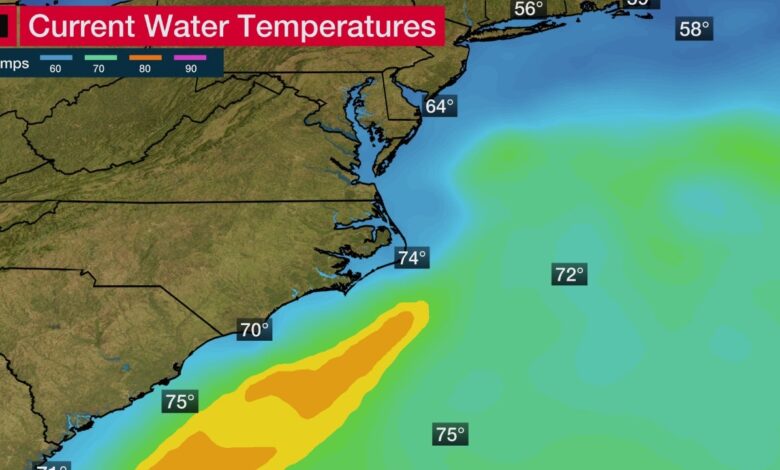Current Temperature Check: Are We Breaking Records

Understanding the implications of current temperature trends is vital in grasping the broader narrative of our planet’s climate. Fluctuations in temperature affect not only the global environment but also local weather patterns, ecosystems, and daily human life.
The title “Current Temperature Check: Are We Breaking Records” invites us to delve into a comprehensive examination of recent temperature data, its historical context, and the potential long-term consequences of the patterns we observe today.
Introduction to Temperature Records
Temperature records offer us quantifiable evidence of climatic trends. As a measurement, the current temperature reflects the immediate state of the atmosphere in a particular location. However, when placed within the framework of historical data.
These measurements can indicate much more. Patterns emerge that tell the story of our changing planet. When we ask whether we are breaking records, we are not merely inquiring about extremes but also seeking to understand the frequency and intensity of these extremes over time.
Historical Temperature Benchmarks
The study of historical temperature data is a window into past climate conditions. Before the advent of modern instruments, historical temperature records were less precise than they are today. Despite this, historical benchmarks are crucial for constructing a narrative of climate evolution. These records have been derived from various proxies such as ice cores, tree rings, and sediment layers.
Modern Temperature Monitoring
In contrast, modern monitoring uses sophisticated technology such as satellite measurements, automated weather stations, and ocean buoys. This data is more accurate, providing real-time temperature readings that form an extensive database. These technological advancements have revolutionized our ability to track current temperature changes, making it easier to identify when we are on the brink of setting new records.

Global Temperature Trends
Global temperature data from organizations like NASA and the National Oceanic and Atmospheric Administration (NOAA) reveals that the planet has been experiencing a warming trend for several decades. The current temperature must be viewed in this context—what may seem like a slight annual increase is part of a persistent and troubling upward trajectory.
Are We Experiencing Unprecedented Warmth?
Recent data suggests we are experiencing unprecedented warmth in many parts of the world. Year after year, we have seen average global temperatures increase, with the last decade being the warmest on record. Heatwaves and high-temperature records in cities worldwide have become more frequent, signaling a shift in what we consider ‘normal’ weather.
Regional Temperature Variations
While global averages are essential, regional temperatures tell a more nuanced story. For instance, the Arctic is warming more than twice the global average. This phenomenon, known as Arctic amplification, has profound implications for global weather patterns, including the jet stream’s behavior, which can affect weather in the mid-latitudes.
Impacts of Rising Temperatures
The rise in current temperature is not a mere statistic; it has tangible impacts on the planet. Melting glaciers, rising sea levels, increased frequency of extreme weather events, and shifts in biodiversity are just a few consequences. Understanding these impacts is crucial for preparing for and mitigating the effects of further temperature increases.
The Science of Temperature Record-Keeping
Temperature record-keeping is more complex than it may seem. Various factors influence temperature readings, including the location of weather stations, when measurements are taken, and the local geography.
Accuracy and Consistency in Measurement
The consistency of measurement methods over time is crucial for comparing current temperatures with historical data. There has been a concerted effort to standardize measurement practices globally, but challenges remain, particularly when integrating older data with contemporary records.
Adjustments and Homogenization of Data
Scientists often have to adjust historical temperature data to account for changes in measurement techniques and locations of weather stations. This process, known as homogenization, is essential to ensure that we compare ‘apples to apples’ when looking at temperature data over long periods.
The Role of Climate Models
Climate models are vital for interpreting current temperature data and predicting future trends. These complex computer simulations take into account various factors, including greenhouse gas concentrations, solar radiation, and volcanic activity,
to project temperature changes. By comparing model projections with actual temperature records, scientists can refine their understanding of the climate system.

The Human Element: Understanding Temperature Anomalies
Human activities, especially the burning of fossil fuels and deforestation, have contributed significantly to the current temperature increases. These activities have increased the concentration of greenhouse gases in the atmosphere, trapping more heat and causing the global temperature to rise.
The Greenhouse Effect and Temperature
The greenhouse effect is a natural process that warms the Earth’s surface. However, human-induced increases in greenhouse gases have enhanced this effect, leading to a warmer climate. This enhanced greenhouse effect is the primary driver of the warming trend observed in current temperature records.
Urban Heat Islands and Local Temperatures
Urban areas often experience higher temperatures than their rural surroundings, a phenomenon known as the urban heat island effect. This is due to the absorption and retention of heat by buildings, asphalt, and other infrastructure.
Urban heat islands can skew local temperature records, making it seem like a particular area is warming more than it is on a regional scale.
Responding to Temperature Changes
In the face of mounting evidence of temperature increases, there is a global effort to respond to climate change. These responses range from international agreements to reduce greenhouse gas emissions to local initiatives to improve heatwave resilience.
Mitigation Strategies
Mitigation involves reducing the output of greenhouse gases and enhancing the sinks that absorb these gases. This can be achieved through transitioning to renewable energy sources, improving energy efficiency, and protecting and expanding forests.
Adaptation Measures
Adaptation measures focus on adjusting to the current and expected future climate. This includes designing cities to cope with higher temperatures, developing heat-resistant crops, and constructing sea defenses to protect against rising sea levels.
The Role of Policy and Individual Actions
Governments have a crucial role in shaping policies that address temperature increases. The Paris Agreement, for example, sets out a global framework for limiting global warming. However, individual actions also play a significant role, from our choices about transportation to the products we buy and the foods we eat.
Conclusion
As we continue to monitor current temperature trends, it is almost certain that more records will be broken. The implications for the Earth’s climate system are profound and multifaceted. Understanding and responding to these changes is one of the most significant challenges of our time.
While it is too late to prevent some of the impacts of increased temperatures, there is still time to mitigate the worst effects and adapt to those we cannot avoid. Our response will shape the future of our planet for generations to come.
Also, Read The Following: PO Box 6184